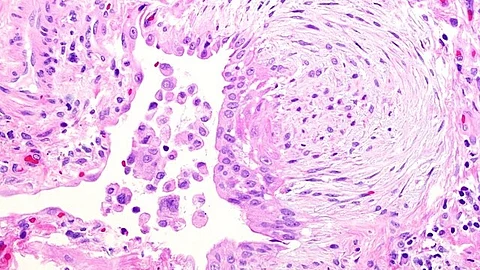

In a new study on mice, researchers at Karolinska Institutet and Uppsala University in Sweden show that connective tissue cells called fibroblasts have a previously unknown and very important function in mediating erection.
“Fibroblasts are the most abundant cells in the penis of both mice and humans, but they have been neglected in research,” says Eduardo Guimaraes, researcher at the Department of Cell and Molecular Biology at Karolinska Institutet and first author of the paper. “Now we can show, using a very precise method called optogenetics, that they have a very important role in regulating blood flow in the penis, which is what makes the penis erect.”
The study shows that fibroblasts mediate erection by taking up the neurotransmitter noradrenaline, which leads to the widening of blood vessels in the penis. How effective this process is depends on the number of fibroblasts.
The researchers were also able to show that the number of fibroblasts in the penis is affected by the frequency of erections. The more frequent the more fibroblasts and vice versa; a lower frequency of erections reduced the number of fibroblasts.
“It’s not so strange really. If you exert yourself a lot, your body adapts. If you run regularly, it will eventually become easier to breathe while running,” says Christian Göritz, senior researcher at the Department of Cell and Molecular Biology at Karolinska Institutet, who led the study.
In terms of what conclusions can be drawn for humans from studies on mice, Christian Göritz says that in this case there are significant similarities.
“The basic mechanisms of erection are very similar in all mammals regarding anatomy, cell structure and so on,” he says. “However, there is one difference between humans and most mammals – they have a bone in their penis. This means that effective blood flow regulation is probably even more important for human reproduction.”
Older mice had fewer fibroblasts in the penis, which was also reflected in lower blood flow. The ability to get an erection decreases with age also in humans, which could be partly due to fewer fibroblasts in the penis. The researchers therefore believe that it could be possible to train the ability to get an erection to counteract impotence in the same way as you can train your strength or fitness at the gym.
The researchers therefore believe that it could be possible to train the ability to get an erection to counteract impotence in the same way as you can train your strength or fitness at the gym.
“This is not something we have shown in our study, so it is a bit speculative, but a reasonable interpretation is that it gets easier if you have regular erections,” says Christian Göritz.
He hopes that the new knowledge of the role of fibroblasts in erection may also lead to new treatments for erectile dysfunction.
The research was mainly funded by the Bertil Hållsten Foundation and the Knut and Alice Wallenberg Foundation. There are no reported conflicts of interest.
Facts: Erectile dysfunction, or impotence, affects between 5 and 20 per cent of all men, with the incidence increasing with age. Erectile dysfunction often negatively affects the quality of life and physical and psychosocial health, both for the patient and their family. Common risk factors, apart from age, are similar to those for cardiovascular disease: inactivity, obesity, hypertension, smoking, high cholesterol levels and metabolic syndrome. Source: Region Stockholm knowledge support Viss.nu. (RJ/Newswise)
